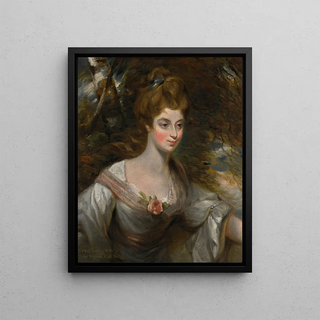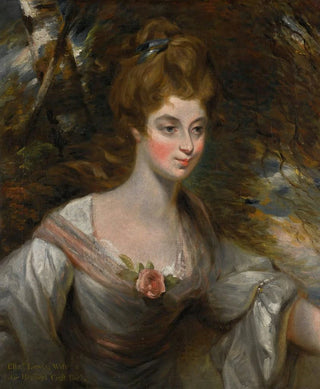Art print | Portrait of Elizabeth Lady Croft - John Constable


View from behind

Frame (optional)
Portrait of Elizabeth Lady Croft - John Constable – Captivating Introduction
The art print "Portrait of Elizabeth Lady Croft" by John Constable awakens in us a fascination for the world of early 19th-century art. This piece, which captures the grace and elegance of an iconic female figure of her time, transports us into a universe where light, color, and emotion blend harmoniously. As we contemplate this work, we feel a deep connection to British history and culture, while witnessing a technical mastery that transcends time. Constable's art is not limited to simple representation; it is an invitation to explore the feelings and thoughts that inhabit his subjects.
Style and uniqueness of the work
John Constable's style is often associated with Romanticism, but he stands out for his ability to combine realism and idealization. In "Portrait of Elizabeth Lady Croft," Constable manages to capture not only the physical features of his model but also her essence. Delicate colors and fluid brushstrokes give the work an almost ethereal lightness. The artist uses subtle nuances to render Lady Croft's skin with remarkable softness, while the details of her attire reveal a keen sense of observation. This art print is more than a simple portrait; it is a psychological study, a reflection of the sitter's personality, which can be guessed through her contemplative gaze and elegant posture. The composition, balanced and harmonious, creates an intimacy between the viewer and the subject, making the experience of viewing even more captivating.
The artist and his influence
John Constable, born in 1776, is one of the most influential painters of his time, and his work marked a turning point in the history of British art. Although primarily known for his landscapes, especially those of Suffolk, his approach to portrait art demonstrates a unique sensitivity. Constable skillfully integrates elements of nature into his works, and this is also evident in his portraits. His use of natural light and his ability to capture the atmosphere of a specific moment are characteristics that have inspired many artists after him. By moving away from the rigid conventions of academic portraiture, Constable has

Matte finish

View from behind

Frame (optional)
Portrait of Elizabeth Lady Croft - John Constable – Captivating Introduction
The art print "Portrait of Elizabeth Lady Croft" by John Constable awakens in us a fascination for the world of early 19th-century art. This piece, which captures the grace and elegance of an iconic female figure of her time, transports us into a universe where light, color, and emotion blend harmoniously. As we contemplate this work, we feel a deep connection to British history and culture, while witnessing a technical mastery that transcends time. Constable's art is not limited to simple representation; it is an invitation to explore the feelings and thoughts that inhabit his subjects.
Style and uniqueness of the work
John Constable's style is often associated with Romanticism, but he stands out for his ability to combine realism and idealization. In "Portrait of Elizabeth Lady Croft," Constable manages to capture not only the physical features of his model but also her essence. Delicate colors and fluid brushstrokes give the work an almost ethereal lightness. The artist uses subtle nuances to render Lady Croft's skin with remarkable softness, while the details of her attire reveal a keen sense of observation. This art print is more than a simple portrait; it is a psychological study, a reflection of the sitter's personality, which can be guessed through her contemplative gaze and elegant posture. The composition, balanced and harmonious, creates an intimacy between the viewer and the subject, making the experience of viewing even more captivating.
The artist and his influence
John Constable, born in 1776, is one of the most influential painters of his time, and his work marked a turning point in the history of British art. Although primarily known for his landscapes, especially those of Suffolk, his approach to portrait art demonstrates a unique sensitivity. Constable skillfully integrates elements of nature into his works, and this is also evident in his portraits. His use of natural light and his ability to capture the atmosphere of a specific moment are characteristics that have inspired many artists after him. By moving away from the rigid conventions of academic portraiture, Constable has






